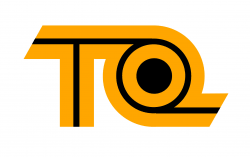Title Page
-
Conducted on
-
Prepared by
-
Location
-
-
-Tan Chong Ekspres Auto Servis Sdn Bhd
Workshop:
-
Person completing inspection:
-
Inspection Date:
-
Review Date:
1. TOOLS & EQUIPMENT
Checkpoint
-
Remarks/Photo
-
1.1 Is the air compressor in good working condition (i.e. oil level, safety valve, motor guarded, water drained, etc.)?
-
1.2 Is the monthly inspection to all the air compressor being carried out correctly and according to schedule?
-
1.3 Is the periodical maintenance and inspection to the air compressor being carried out (at least once per year) and inspection records documented?
-
1.4 Are the air compressor possess valid PMT license and PMT number displayed clearly at air compressor?
-
1.5 Are the electrical panel & electrical room closed from unauthorized access and the clearance maintained?
-
1.6 Are all the electrical appliances safe and free of frayed cable, broken socket & plugs?
-
1.7 Are the grinder(s), cutter(s), and driller(s) maintained in good working condition and rotating parts properly guarded?
-
1.8 Is the provision of air gun and hand tools (hammer, spanner, copper hammer, wrench, etc.) sufficient and in good condition?
-
1.9 Is the gas cylinder in safe and good condition (flash back arrestor, pressure gauge, air hose, chained, trolley)?
-
1.10 Is the Hydraulic press in good working condition (pressure gauge, oil leaking, etc.)?
-
1.11 Is the battery charger located at designated place only (with label) & isolated from ignition source?
Checkpoint
2. TOOLS & EQUIPMENT (LOT 9 & LOT 29)
-
Remarks/Photo
-
2.1 Are all the overhead cranes in good condition (wire rope, sling, brake, button, unusual noise, etc.)?
-
2.2 Is the weekly inspection to all the overhead crane being carried out correctly and according to schedule?
-
2.3 Is the periodical maintenance and inspection to the overhead crane being carried out (at least once per year) and inspection records documented?
-
2.4 Is the overhead crane operated by trained person and in a safe manner (clearance, balance, signalman, travelling area)?
-
2.5 Are all the hoists in good working condition (i.e. rubber pads, balancing, locking arm, safety lock, cables, oil leaking, rusty, etc.)?
-
2.6 Is the weekly inspection to all the hoists being carried out correctly and according to schedule?
-
2.7 Is the periodical maintenance and inspection to the hoists being carried out (at least once per year) and inspection records documented?
-
2.8 Is the hoist operated by the authorized person in a safe manner (e.g. lifting point, safety lock, etc.)?
-
2.9 Are the equipment possess valid PMA license and PMA number displayed clearly at overhead crane & hoist?
-
2.10 Is the air sampling report for spray booth available?
-
2.11 Is the daily performance monitoring conducted correctly and records kept?
-
2.12 Is the spray booth monthly inspection carried out and records kept?
-
2.13 Is the periodic maintenance carried out to the spray booth?
-
2.14 Is the written declaration/notification for spray booth available?
3. COMPANY VEHICLE & FORKLIFT
-
3.1 Are all the company vehicles in good condition (refer to the inspection checklist)?
-
3.2 Are the safety triangle and lifting jack, ready in the vehicle?
-
3.3 Is the fire extinguisher (no expired) ready in the vehicle?
-
3.5 Is the sufficient first aid supplies ready in the vehicle?
-
3.6 Is the reflector available at all company vehicles?
-
3.7 Is the weekly vehicle inspection carried out and records kept?
-
3.8 Is the forklift in good working condition (i.e. tyre, lamp, horn, chain, fork, reverse buzzer, signal light, seat, etc.)?
-
3.9 Is weekly inspection for the forklift carried out and inspection records available?
-
3.10 Is the periodical maintenance and inspection to the forklift being carried out and inspection records documented?
-
3.11 Is the forklift operated by trained person and in a safe manner?
4. WORKSHOP STORAGE
-
4.1 Is the oil storage area clean and well ventilated?
-
4.2 Are the oil drums, pails, bottles and cartons arranged and stacked in safe manner?
-
4.3 Are the flammable materials (e.g. paint and thinner) stored at designated area only?
-
4.4 Is the flammables storage (paint store) clean, ventilated and distance away from heat/ignition source?
-
4.5 Is the battery acid safely stored at designated place?
-
4.6 Is the half-used chemical (battery acid, paint, etc.) being closed and keep on spill containment tray?
-
4.7 Is the reused container or jug re-labeled accordingly?
-
4.8 Is the safety data sheet (SDS) available at oil storage/paint storage/battery acid storage?
-
4.9 Is the workshop store clean and free of trip and fall hazard?
-
4.10 Is the stored item arranged/stacked in safe manner?
-
4.12 Is the stepstool or ladder provided and safe to be used to access the stored material at height?
5. ENVIRONMENTAL ISSUE
-
5.1 Is the scheduled waste store designed according to DOE requirement (i.e. spill containment, protected from weather, clean, signboard and warning sign, isolated from ignition source, etc.)?
-
5.2 Are the waste labels displayed correctly (i.e. display on container, generation date, waste code, symbol, etc.)?
-
5.3 Are the waste containers suitable and covered when not in use?
-
5.4 Are the spent lubricating oil, used oil filter, spent coolant, empty drum, contaminated containers, cotton rags and used battery being managed as scheduled waste and separated accordingly?
-
5.5 Is the oil interceptor constructed to filter all the oil contaminated water discharged from workshop?
-
5.6 Is the oil interceptor well maintained and the maintenance record documented?
-
5.7 Are the drain and workshop compound clean and free of stagnant water?
-
5.8 Are the waste information cards available and kept properly?
-
5.9 Are the inventory records and consignment notes updated and printed out from eSWIS system?
-
5.10 Is the valid waste contractor license printed out and kept properly?
6. PARTS STORE & OFFICE STORE
-
6.1 Is the parts store clean, organized and free of trip and fall hazard?
-
6.2 Are the stored materials at parts store arranged/stacked in safe manner?
-
6.3 Is the safety data sheet (SDS) available at parts store?
-
6.4 Is the office store clean, organized and free of trip and fall hazard?
-
6.5 Are the stored materials at office store arranged/stacked in safe manner?
-
6.6 Is the trolley provided and safe to be used to move/lift the heavy loads?
-
6.7 Is the stepstool or ladder provided and safe to be used to access the stored material at height?
-
6.8 Are the stored materials being kept away from lights and fire detectors?
-
6.9 Are all the racks in good condition and not overloaded?
7. EMERGENCY RESPONSE
-
7.1 Is the provision of fire extinguisher sufficient and ready for use (i.e. BOMBA Certificate, Safety Pin, Pressure, etc.)?
-
7.2 Are all the fire extinguishers mounted properly, visible, accessible and free from obstacles?
-
7.3 Is the fire extinguisher inspected according to schedule (quarterly) and inspection tag available at fire extinguisher?
-
7.4 Are the firefighting system well maintained and periodic maintenance records are available?
-
7.5 Are the first aid supplies sufficient, clean and free of edible medicine?
-
7.6 Is the first aid inspection record available?
-
7.7 Are the emergency light and exits sign lit properly?
-
7.8 Are the emergency exit doors accessible and free from obstacles?
-
7.9 Are the evacuation plan and emergency contact number updated and displayed at customer lounge, office, workshop, mechanic room, parts store and security area?
-
7.10 Are the Emergency Response Team established at workshop and well communicated?
-
7.11 Are the ERT members training record kept properly?
-
7.12 Is the security personnel briefed on the emergency procedure (emergency contact, fire extinguisher, fire alarm system, etc.)?
-
7.13 Is the AED & Oxygen Tank functioning and the service records available?
8. PERSONAL PROTECTIVE EQUIPMENT
-
8.1 Is the appropriate foot protection (safety shoes or rubber boots) provided and worn by the workers (mechanic & parts personnel) at all time in the workplace?
-
8.2 Is the safety glass provided for every mechanic and worn during grinding, drilling, knocking, cutting, preparing or other hazardous activities?
-
8.3 Is appropriate hand protection glove provided every mechanic and worn for mechanical work or task exposed to sharp edges?
-
8.4 Is the chemical hand glove and safety goggle provided and worn when handling the chemicals (paint, solvent, battery acid, scheduled waste, etc.)?
-
8.5 Is the appropriate OV respirator provided and worn when exposed to chemicals vapor (paint & thinner)?
-
8.6 Is the appropriate N95 mask provided and worn when exposed to dust particles?
-
8.7 Are welding shield, leather glove and N95 mask provided and worn for welding activity?
-
8.8 Is the earplug provided and worn when worker exposed to noise (i.e. grinding, knocking, etc.)?
-
8.9 Is the safety helmet provided for every mechanics and worn when the overhead crane is under operation?
-
8.10 Is the surgical mask provided and ready for sick person?
-
8.11 Is the reflective vest provided to all the motorcyclist?
-
8.11 Are all the provided PPE clean and well maintained (i.e. sharing of PPE is not allowed)?
-
8.12 Is the PPE issuance record available?
9. COMMON AREA
-
9.1 Is the smoking area available, provided with ashtray and away from non-smoker?
-
9.2 Is the staff smoking at designated smoking area only?
-
9.3 Are the working bay and store free of food and drink?
-
9.4 Are the customer lounge, reception office, HOB room, office, and meeting room clean and organized?
-
9.5 Are the surau, washroom and pantry clean and organized?
-
9.6 Is the water dispenser provided and well maintained?
-
9.7 Are all the floors, passageways and staircase free of slips, trips and falls hazard?
-
9.8 Is the roof/ceiling free of leaking and falling object (e.g. frayed ceiling, frame for lighting, etc.)?
-
9.9 Is the lighting sufficient at all the places?
-
9.10 Is the workplace free of opening/unguarded floor or falling from height hazard?
10. SIGNAGE
-
10.1 Is the SAFETY FIRST signage displayed visibly at workshop?
-
10.2 Is the NO SMOKING signage displayed visibly at workshop, office and customer lounge?
-
10.3 Is the PPE signage displayed visibly at workshop, battery acid area, spray booth, paint mixing area, rotating machine, etc.? (refer to the signage guideline)
-
10.4 Is the CHEMICAL warning signage displayed visibly at oil store, paint store, scheduled waste store and chemical storage area?
-
10.5 Is the SMOKING AREA signage displayed visibly at smoking area for customer and staffs?
-
10.6 Is the ASSEMBLY POINT signage displayed visibly at designated assembly area?
-
10.7 Is the FIRST AID signage displayed visibly to indicate the location of first aid kit?
-
10.8 Is the FIRE EXTINGUISHER signage displayed visibly at all the fire extinguisher?
-
10.9 Is the HIGH VOLTAGE warning signage displayed visibly at electrical panel?
-
10.10 Is the OVERHEAD CRANE warning signage displayed visibly?
11. DOCUMENTATION
-
11.1 Is the updated EHS policy displayed clearly?
-
11.2 Are the EHS workplace committee chart available and updated?
-
11.3 Are the EHS workplace committee inspection records & meeting minutes available and updated?
-
11.4 Is the safety briefing conducted to discuss EHS policy, emergency response procedure, safety alert and safe work instruction?
-
11.5 Is the HIRARC document available and accessible?
-
11.6 Are the incident notification records (JKKP 6, 7 & 8) and incident investigation report available and kept in proper manner?
-
11.7 Is the JKKP log book available?
-
11.8 Are the updated Chemical Register available?
-
11.9 Is the safe work instruction available?
-
Other unsafe acts/hazards








